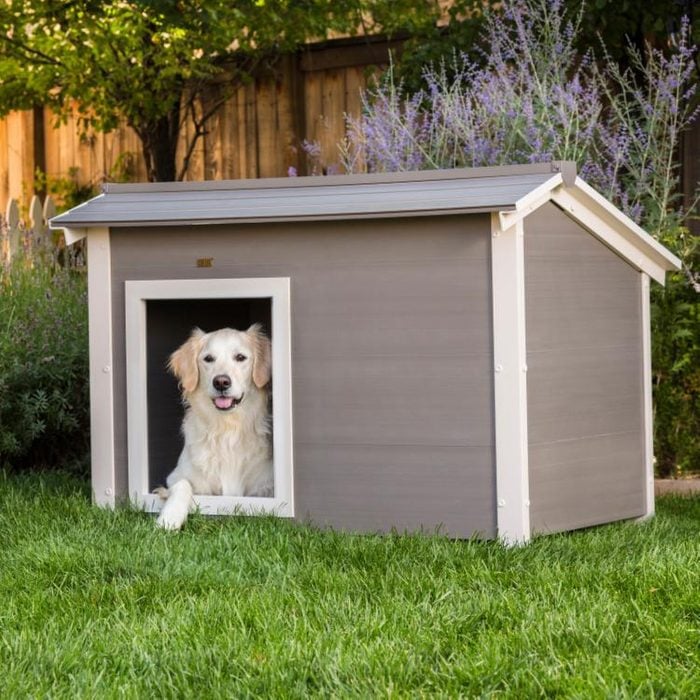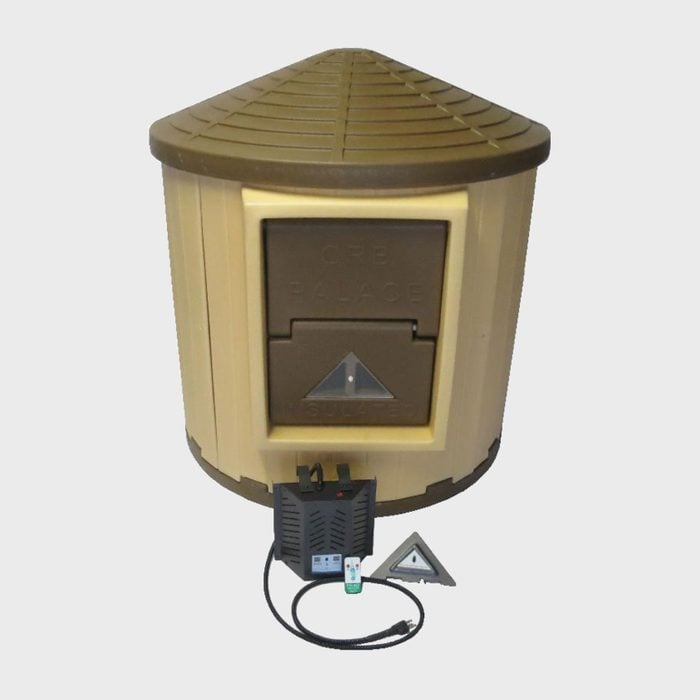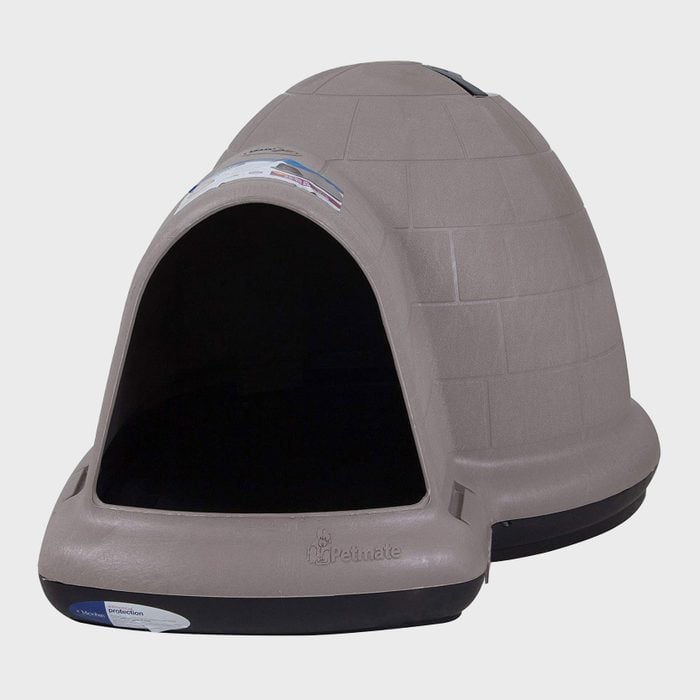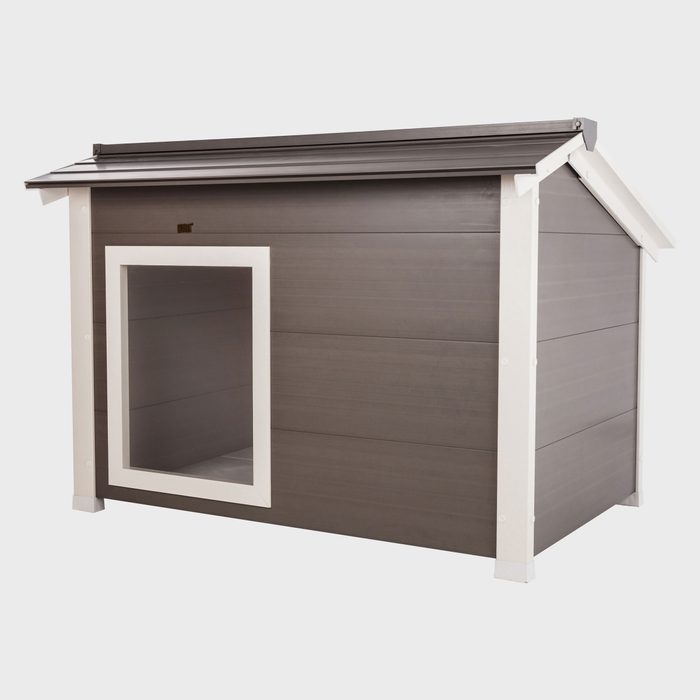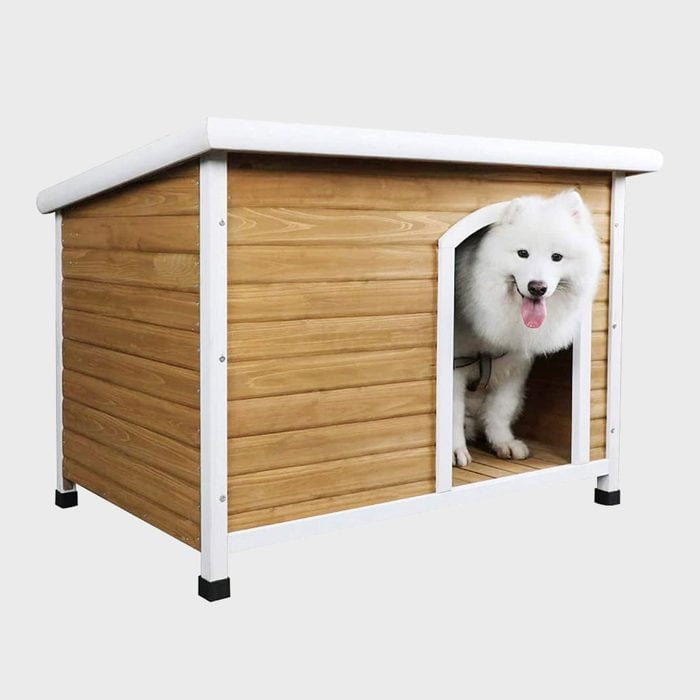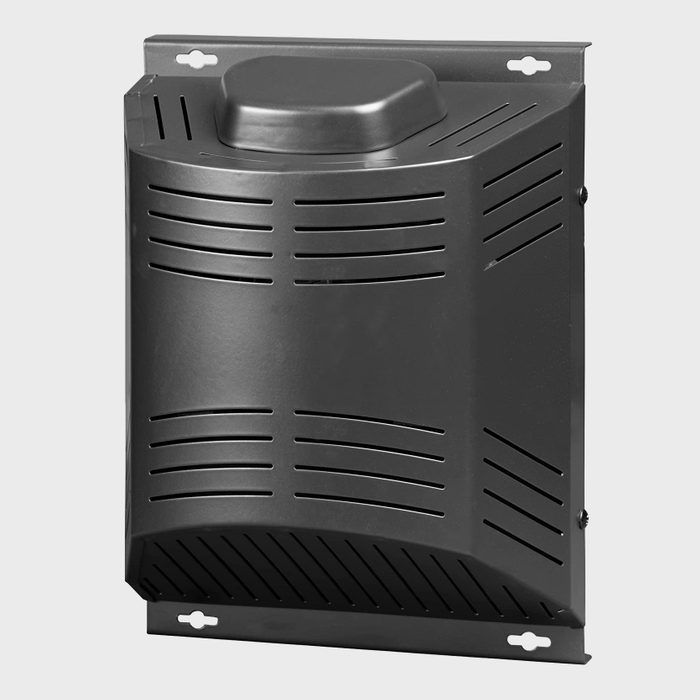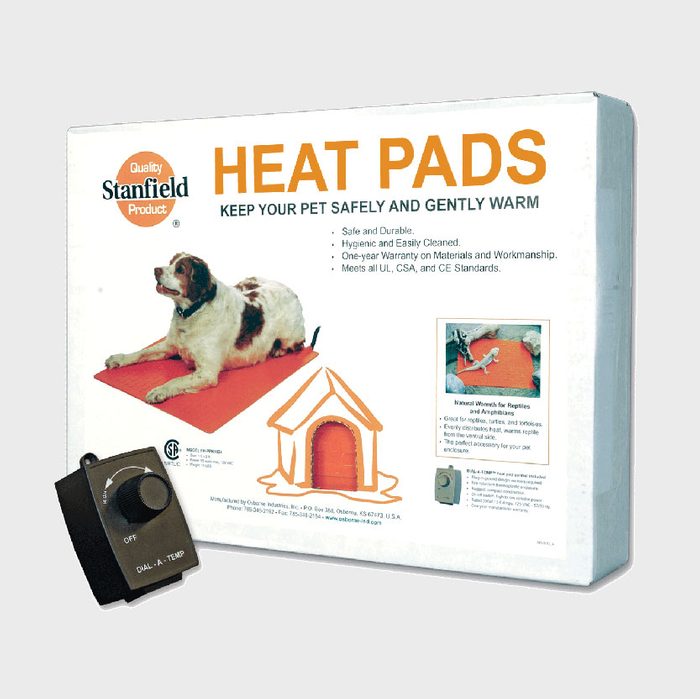Choosing or Creating a Heated Doghouse?
For most dogs, living outside in the winter is not a good idea. But there are times when a heated doghouse can come in handy — say, to break up long periods of indoor time.
“Working, ranch or sled dogs that may be far from their home, barn or kennel may also be good candidates for heated doghouses to give them a sheltered place to rest and sleep away from the elements,” says Dr. Jerry Klein, chief veterinary officer for the American Kennel Club. A heated doghouse is just one of the dog kennel designs that your dog may love.
What to Look For in a Heated Doghouse
Safety comes first, says Klein. Here’s what to look for to keep your dog safe.
- Good materials: The house should be weatherproof and easy to clean and disinfect. A roof you can lift makes this easier.
- Good insulation: This helps keep the cold out in winter and keeps the house cooler in summer. Be sure to cover all insulation with plywood, because it can be toxic if ingested.
- Electrical cord safety: Make sure cords are well covered with a protective coating to prevent chewing, electrocution and fire.
- Size: Your dog should be able to stand up, turn around and lie down comfortably, but otherwise not have a lot of extra space. “Instinct tells them to find a cozy spot that is warm, provides shelter from the elements, and is safe from predators,” says Klein. “[And] it’s easier for a dog’s own body heat to keep the house warm if it’s not too large.” This usually equates to the height and length being about 1-1/2 times your dog’s dimensions, and the width about the same length as your dog. Measure from the floor to the top of their head, or ears if they’re a little taller, and from the tip of their nose to the base of the tail.
- Entrance: Ideally, the door will be offset to one side, or have a small vestibule to help keep wind, rain, snow and sun from directly blowing or shining inside. The door only needs to be tall enough for your dog’s shoulders to clear, and just wide enough to accommodate your dog at their widest point.
Note: It’s best to place an outdoor doghouse on a platform off the ground for drainage and better air circulation.
Outdoor Doghouse Precautions
Heated doghouses are best used when a person is also outside, especially during the day, says Klein. “There is a saying that if the weather is too cold for you, it’s probably too cold for animals for any extended period of time and they should be brought inside,” Klein says.
Here are more recommendations:
- Always consult a veterinarian to see if it’s okay for your dog to stay outside, even just part-time.
- If they’re going to be outside for a while, slowly acclimate them to the environment.
- Dogs will burn more calories in colder temperatures, so slowly acclimate them to those diet changes as well.
- Check on them at least twice a day for frostbite on their noses, ears and paws. Remember that wind chill can cause deadly hypothermia.
- Don’t leave dogs housed or unsupervised outside for any period of time when it’s below 45 F, except well-acclimated double-coated Arctic sled-type breeds.
- Check their water bowls at least twice a day to make sure they aren’t frozen. Or buy a heated bowl.
- Keep the doghouse clean.
Who Should Not Use a Heated Doghouse?
According to Klein, only double-coated dogs acclimated to cooler temperatures should spend any amount of wintertime in a doghouse. He also says never leave these dogs in a doghouse in winter:
- Short-coated or hairless breeds;
- Elderly dogs or those with serious medical concerns like arthritis, spinal or cardiac conditions;
- Puppies and young dogs, because they are more vulnerable and need ample socialization with humans.
“Keeping most dogs outside all night, even in a heated doghouse, is not encouraged,” he says. “And keeping a dog in a doghouse is not a reason to ignore or mistreat a dog.”
Best Extra-Large Doghouse
The round shape of the ASL Solutions CRB Palace Insulated Doghouse works for really big dogs. It’s heavily insulated, with two to four inches of foam insulation in each panel.
The optional heater comes with a thermostat and remote; there’s also an optional solar-powered fan and fleece dog bed. Other handy features: raised flooring; a drainage system for easy cleaning; two small windows that open for cross-ventilation; and a swinging door with a removable bottom half to help the dog get used to going in and out.
Best Budget and Igloo Doghouse
Igloo architecture naturally sheds snow from the top and provides stability in high winds, while offering generous space inside. The U.S.-made Petmate Indigo Doghouse doesn’t come with a heater, but you can buy a heating pad and door flap. It’s sturdy, with a Microban plastic exterior and structural foam insulation.
An offset entrance helps keep snow out (though it’s not as water-tight as other doghouse entryways), and side moats on floor keep it dry. It’s bulky so shipping can take longer for the larger sizes, but once it arrives it snaps together and assembles easily. It’s also easy to clean and comes in three sizes.
Best Eco-Friendly Doghouse
Made from recycled plastic-wood polymer composite, the ThermoCore Insulated Canine Cabin doghouse is stylish like wood doghouses while also Earth-friendly. Insulated panels feature EcoFlex, a foam-based composite blend of reclaimed post-industrial poplar waste and BPA-free recycled high-density plastic.
It’s unheated so you’ll need a heating pad or heater (see below for recommendations). The durable, splinter-proof exterior resists cracking, warping, mold, mildew and rot. Use spray paint to change up the color. It’s also elevated with an offset doorway and flow-through elevation. No tools are required for assembly.
Best Wooden Doghouse
The spruce-wood exterior makes the Petsfit Wooden Doghouse one of the more aesthetically pleasing products on this list. This also doesn’t come with a heater, but you can add a heater or heating pad and purchase the optional insulation kit.
It’s sturdy and easy to assemble, with pre-drilled holes and adjustable feet for leveling. The removable raised floor and open-up roof with pneumatic braces makes it easy to clean. Asphalt shingles and stainless steel hardware give it winter durability. Plus, it comes in three sizes.
Best Working Dog Doghouse
The Cube Doghouse from the K9 Kennel Store is heavy-duty and the price reflects that, especially once you add the optional heater. It’s well insulated with double-wall construction, a weather-proof aluminum exterior and a double-swing aluminum door flap.
The wooden interior helps regulate humidity, and there’s no metal inside to collect moisture or freeze. The lid opens for cleaning. It’s made in the U.S., comes in two sizes and has an optional kennel attachment.
Best DIY Doghouse Heater
If you’re building a doghouse or retrofitting an existing one with heat, the ClimateSAFE by ClimateRight Electric Heater can safely deliver warmth. The wall-mounted unit is made for outdoor dog and other animal enclosures.
It comes with an internal fan, three temperature settings and 200 watts of heat. It requires no venting and the cord is chew-proof. For safety, the heater turns off when it senses it’s too hot while the fan stays on.
Best Heating Pad
Heating pads can give a little boost of warmth to an existing doghouse, or comfort an old dog or a new litter of puppies inside your home. Look for pads with heating elements that deliver warmth across the whole pad, not just at the center.
Take this high-quality U.S.-made Stanfield Heating mat by Osborne. It maintains a steady rate of 30 to 35 F above ambient room temperature. Made of fiberglass-reinforced plastic, it’s non-porous for easy cleaning, non-flammable, water-tight and safe for outdoor doghouses. It’s ultra-thin for comfort, but also tough enough to weather chewing and scratching.

